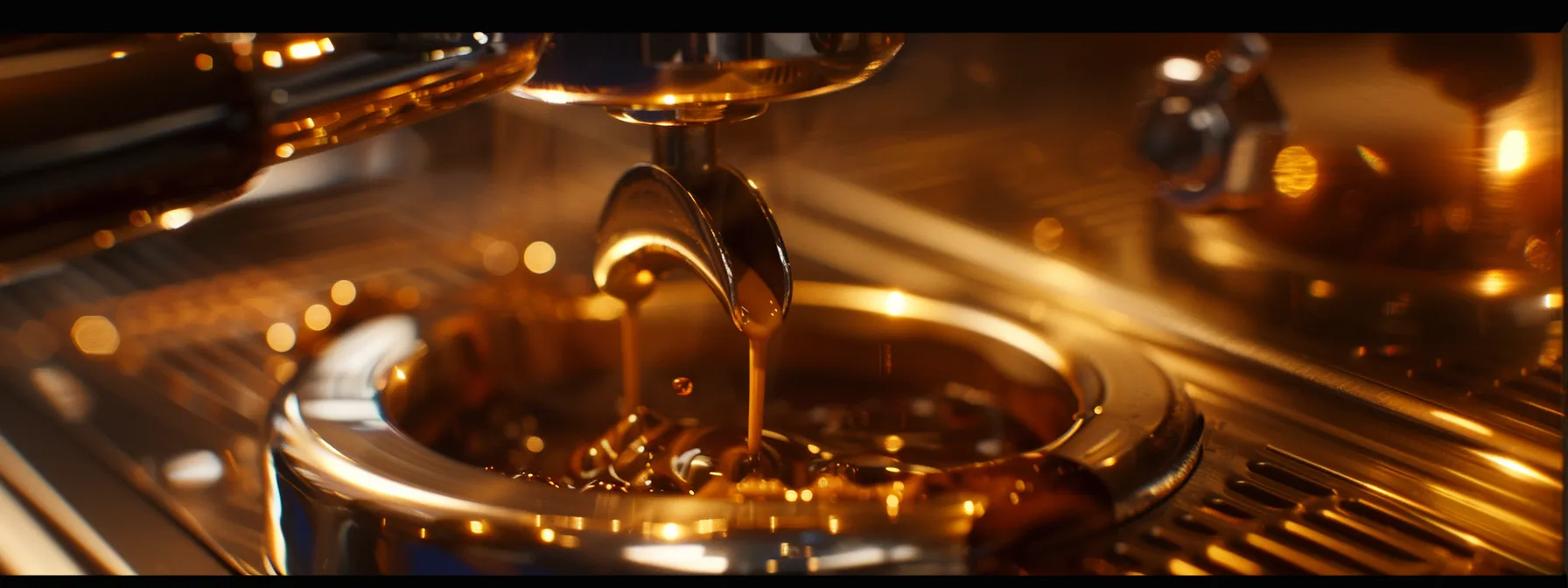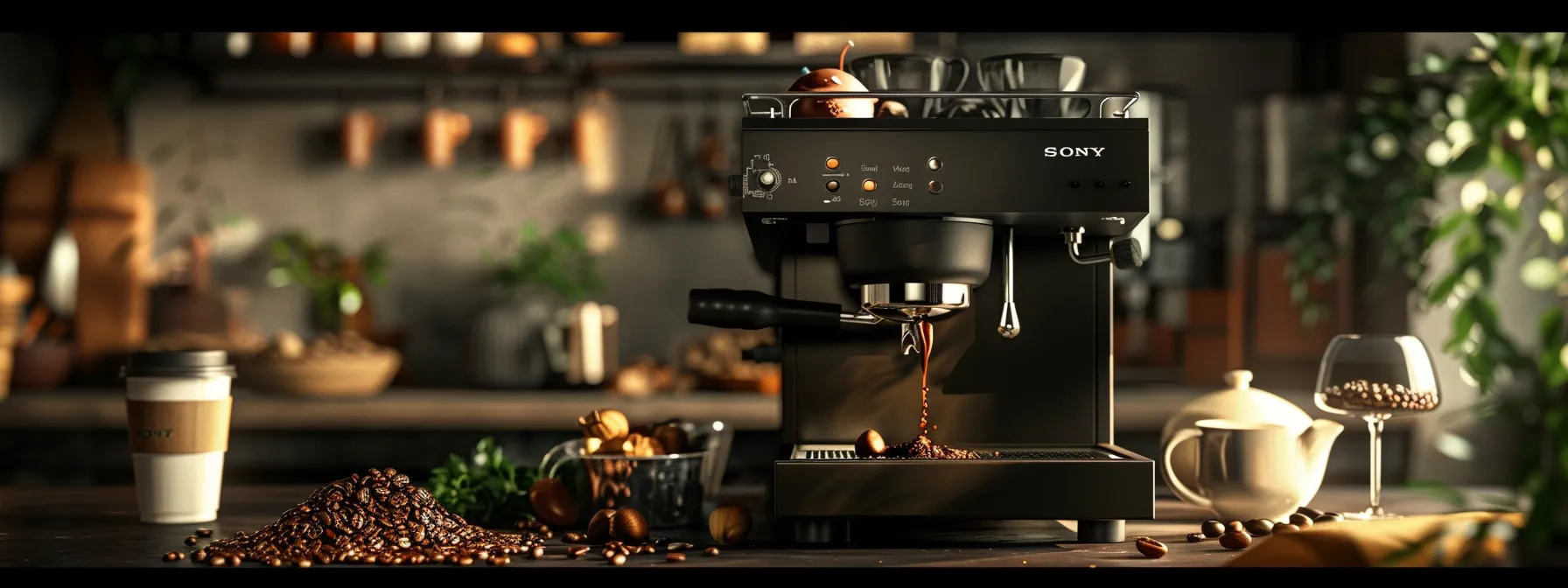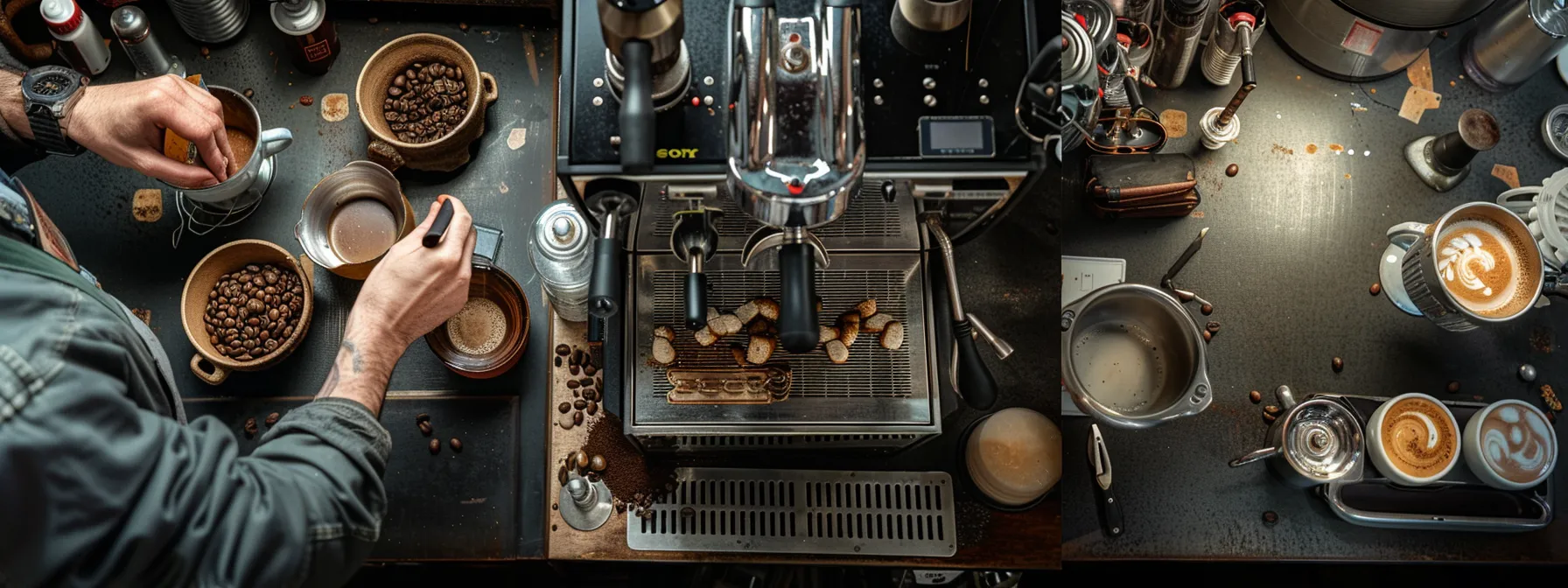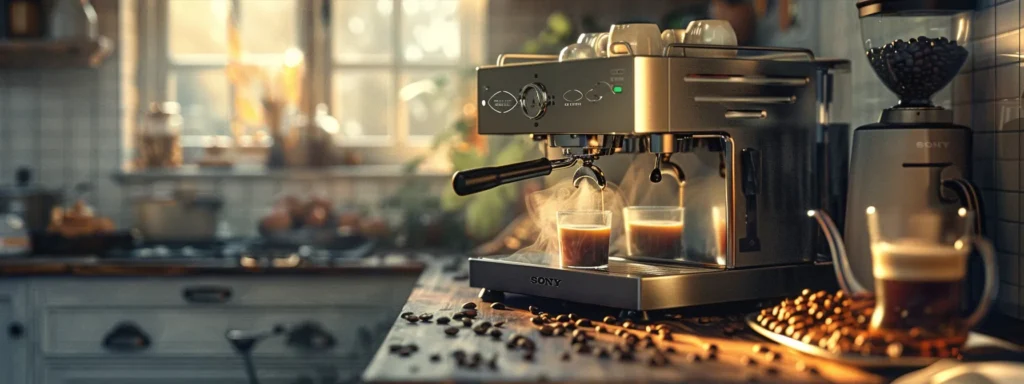Last Updated on October 15, 2024 by Timothy Byron Smith
Are you tired of your drip coffee and looking to elevate your morning routine with specialty coffee? Brewing the perfect home espresso involves knowing the right techniques and equipment, understanding pressure, and selecting quality beans. This ultimate guide will walk you through the essentials of espresso brewing, including key equipment, a detailed step-by-step process, and troubleshooting tips for common challenges. By the end of this post, you’ll be equipped to create a café-quality espresso right in your kitchen, transforming your coffee experience and satisfying your cravings.
Understanding the Fundamentals of Espresso Brewing

Espresso is a concentrated coffee drink made by forcing hot water through finely-ground coffee beans. Understanding the science behind espresso extraction helps you appreciate the importance of each step in the brewing process. Using fresh beans and the right gram measurement, along with a proper tamper, can significantly enhance your espresso experience. Here, you will learn the essentials that will guide you toward crafting the perfect home espresso.
What Is Espresso?
Espresso is a rich and concentrated coffee drink that results from forcing hot water through finely-ground coffee. The ideal espresso requires careful attention to the coffee-to-water ratio, as this influences both the caffeine content and the overall taste. Using an espresso machine not only enhances the efficiency of this process but also allows you to experiment with various methods, including creating delicious iced coffee drinks that showcase the depth of flavor found in quality espresso.
The Science Behind Espresso Extraction
The science behind espresso extraction involves understanding how various factors influence the flavor and quality of your brew. One critical element is the dose of coffee; using the right amount ensures a balanced extraction, similar to what you might experience in your favorite coffeehouse. Additionally, the grind size from your mill affects how the water interacts with the coffee—finer grounds allow for optimal extraction, while coarser grounds may lead to under-extraction. While methods like the moka pot or Aeropress can yield delicious results, mastering espresso techniques will elevate your home brewing experience, allowing you to enjoy café-quality flavors in each cup.
Importance of Fresh Beans
Using fresh beans is crucial when crafting the perfect home espresso. Freshly ground coffee helps maintain the rich flavors and aromatic qualities essential for a great shot. Whether you’re using a high-end machine like La Marzocco or a simple pump espresso maker, the freshness of your beans significantly impacts the taste, ensuring you achieve barista-quality espresso every time. Opting for beans within two weeks of roasting will enhance your chances of a delicious brew, giving you the satisfaction of café-style espresso without the need for a Keurig or similar simplified options.
Essential Equipment for Home Espresso Brewing

To craft the perfect home espresso, you need the right equipment. Start by choosing an espresso machine that suits your brewing style and budget, focusing on features like the boiler type for heat stability. Next, select a quality grinder, as the grind size directly affects coffee extraction. Finally, gather must-have accessories, including a tamper and scale to measure weight for precise brewing and foam creation.
Choosing the Right Espresso Machine
Choosing the right espresso machine is essential for brewing high-quality coffee at home. Start by considering your brewing needs and budget; options vary from manual lever machines for enthusiasts to semi-automatic models that offer a balance of control and convenience. Look for features like a reliable boiler system, steam wand for milk frothing, and ease of maintenance, which can all enhance your espresso experience and help you achieve that perfect shot every time.
Selecting a Quality Grinder
Selecting a quality grinder is vital for achieving a superior home espresso. A burr grinder is often recommended, as it produces a consistent grind size, which is crucial for proper extraction. Investing in a reliable grinder will allow you to adjust the grind settings to match the specific requirements of your espresso machine, ensuring you achieve that perfect balance of flavor and aroma in every shot.
Must-Have Accessories
To enhance your home espresso brewing experience, several must-have accessories are essential. A quality tamper allows you to apply even pressure to your coffee grounds, ensuring a consistent extraction, while a reliable scale helps you measure the precise coffee-to-water ratio for optimal taste. Additionally, a milk frother or a steam wand can elevate your drinks, enabling you to create lattes and cappuccinos that rival your favorite café, making each cup not just a drink, but an experience you look forward to.
Selecting the Perfect Coffee Beans

Selecting the Perfect Coffee Beans
Choosing the right coffee beans is crucial for crafting exceptional home espresso. This section will cover the best bean varieties suitable for espresso, explore the impact of roast levels on flavor, and provide tips for sourcing quality beans. Understanding these key factors will help you make informed decisions and enhance your espresso-making journey.
Best Bean Varieties for Espresso
When selecting the best bean varieties for your espresso, focus on Arabica and Robusta beans. Arabica beans are known for their smooth, nuanced flavors and higher acidity, making them a popular choice for quality espresso. In contrast, Robusta beans deliver a stronger, earthy taste and more crema, providing a fuller body. Blends combining both types allow you to achieve a balanced flavor that enhances your espresso experience, so consider experimenting with different blends and single-origin options to find the perfect match for your palate.
Exploring Roast Levels
Exploring roast levels is key to achieving the desired flavor profile in your espresso. Light roasts tend to have bright acidity and pronounced fruity flavors, which can make your espresso taste vibrant and complex. On the other hand, medium roasts balance acidity with sweetness, resulting in a smoother cup, while dark roasts offer bold, rich flavors with lower acidity, giving your espresso a strong body. Test various roast levels to discover what suits your palate, and remember that freshness matters; using beans roasted within the past two weeks ensures optimal flavor when brewing.
Tips for Sourcing Quality Beans
When sourcing quality coffee beans for your perfect home espresso, prioritize freshness and provenance. Look for local roasters who offer beans roasted within two weeks, as this ensures optimal flavor retention. You might also want to inquire about the bean‘s origin and processing methods; this knowledge can guide you to varieties that suit your taste preferences and brewing style. By focusing on these factors, you can enhance your espresso experience and create a truly satisfying brew at home.
Step-by-Step Guide to Crafting Espresso at Home

Step-by-Step Guide to Crafting Espresso at Home
Start by preparing your equipment to ensure a seamless brewing experience. Next, master the grind size, as it significantly affects extraction quality. Proper dosing and tamping techniques are crucial to achieving balance in flavor. Focus on perfecting the extraction process, and finally, evaluate and adjust your espresso to sharpen your skills. This guide provides actionable steps to help you enjoy café-quality espresso at home.
Preparing Your Equipment
Preparing your equipment is a crucial first step in crafting exceptional home espresso. Start by ensuring that your espresso machine is clean and properly calibrated; regular maintenance keeps it performing at its best, helping to extract rich flavors from your coffee grounds. Additionally, warm up your cups and portafilter to maintain the right temperature during brewing, as even slight variances can impact the final taste of your espresso.
Mastering the Grind Size
Mastering the grind size is crucial for achieving the best espresso at home. Finer grounds increase the surface area to facilitate proper extraction, while coarser grounds can lead to under-extraction, resulting in a weak shot. Experimenting with different grind settings can help you find the perfect consistency that balances flavor and strength, allowing you to enjoy a richer, more satisfying espresso experience.
Proper Dosing and Tamping Techniques
Proper dosing and tamping techniques are essential for producing a high-quality espresso at home. You should use a scale to measure the coffee dose accurately, typically ranging from 18 to 20 grams for a double shot, to ensure a balanced extraction. After dosing, apply even pressure with a tamper to compress the coffee grounds uniformly, creating a solid puck that allows water to flow through evenly; this step is critical for achieving that rich flavor you desire in your espresso.
Perfecting the Extraction Process
Perfecting the extraction process is crucial for brewing an exceptional espresso at home. Aim for an extraction time between 25 to 30 seconds; this duration allows for optimal flavor development and balance. If your espresso is extracted too quickly, it may taste watery and underwhelming; conversely, if it takes too long, the result can be bitter. Adjusting variables like grind size, dose, and water temperature can help you achieve the perfect shot, enhancing your overall espresso experience.
Evaluating and Adjusting Your Espresso
Evaluating and adjusting your espresso is crucial for achieving the perfect shot each time. After brewing, take a moment to taste your espresso and note its flavor profile; if it’s too bitter, consider adjusting the grind size to be coarser or reducing the extraction time. Conversely, if your espresso tastes weak or sour, try a finer grind and ensure an appropriate tamping pressure to enhance flavor and richness, allowing you to refine your home espresso-making skills effectively.
Troubleshooting Common Espresso Challenges

Troubleshooting Common Espresso Challenges
Experiencing bitter or sour tastes in your espresso can be frustrating. This section will help you identify and resolve these flavor issues while also addressing extraction inconsistencies. Additionally, you’ll learn how to maintain optimal temperature and pressure for the best results. Armed with these practical insights, you’ll enhance your espresso-making skills and enjoy perfect shots every time.
Addressing Bitter or Sour Tastes
If you’re encountering bitter or sour tastes in your espresso, it’s essential to evaluate your brewing variables. Bitter flavors may arise from over-extraction, often linked to a too-fine grind or excessive brewing time. Adjusting the grind size to be coarser and aiming for an extraction time of 25 to 30 seconds can significantly improve your shot. On the other hand, sour tastes indicate under-extraction, which can be rectified by using a finer grind and ensuring proper tamping pressure for a balanced flavor. By fine-tuning these elements, you can achieve a smooth, rich espresso that meets your expectations.
Fixing Extraction Inconsistencies
To fix extraction inconsistencies, start by carefully analyzing your grind size and tamping technique. If your espresso tastes weak or watery, a finer grind or firmer tamp may be necessary to enhance flavor extraction. Conversely, if your shot tastes overly bitter, try using a coarser grind and reducing your brewing time to achieve a well-balanced espresso.
Maintaining Optimal Temperature and Pressure
Maintaining optimal temperature and pressure is crucial for achieving the best espresso at home. Ideally, your machine should operate at around 190 to 205 degrees Fahrenheit during extraction, as this range ensures proper flavor extraction from the coffee grounds. If your machine struggles to maintain consistent pressure, make sure to regularly check the water levels and clean the machine to avoid clogs, enabling you to create a rich, flavorful espresso without unnecessary hassle.
Elevating Your Home Espresso Experience

To elevate your home espresso experience, focus on three essential areas: mastering milk frothing techniques for specialty drinks, exploring creative espresso-based recipes, and implementing effective cleaning and maintenance practices for your equipment. Each of these topics will help you create café-quality beverages, discover new flavors, and extend the lifespan of your espresso machine.
Milk Frothing Techniques for Specialty Drinks
Mastering milk frothing techniques is crucial for creating specialty drinks like lattes and cappuccinos at home. Begin by using fresh, cold milk and a steam wand to introduce air and create microfoam; aim for a temperature of around 150 to 155 degrees Fahrenheit for optimal texture. Practice controlling the angle of the steam wand within your milk pitcher, as this will help you achieve that silky, velvety froth that elevates your espresso drinks to café quality.
Creative Espresso-Based Recipes to Try
To elevate your home espresso experience, consider trying creative recipes that go beyond the classic shot. For instance, you can craft a refreshing Espresso Tonic by mixing a shot of espresso with chilled tonic water and a slice of lemon. This combination offers a delightful contrast of flavors that highlights the espresso‘s richness while adding a refreshing twist. You may also explore making an affogato, where a scoop of vanilla ice cream is topped with a hot espresso shot, creating a dessert that balances the intensity of coffee with creamy sweetness. Experimenting with these innovative espresso-based drinks allows you to enjoy the versatility of espresso and impress your guests with café-style beverages made right at home.
Cleaning and Maintaining Your Equipment
Cleaning and maintaining your espresso equipment is vital for consistently delicious shots of coffee. Regularly descale your espresso machine to prevent mineral buildup, which can lead to performance issues and affect flavor. Additionally, be sure to clean the portafilter and baskets thoroughly after each use, as residual coffee oils can cause unwanted bitterness in future brews. By prioritizing maintenance, you not only extend the life of your equipment but also elevate the overall quality of your home espresso experience.
Conclusion
Mastering the art of crafting the perfect home espresso is essential for any coffee enthusiast seeking café-quality beverages. Understanding the fundamentals, from selecting fresh beans to perfecting the extraction process, significantly enhances your brewing experience. Investing in quality equipment, along with honing your techniques, ensures rich flavors and satisfying shots. By following this ultimate guide, you can transform your home brewing ritual into a delightful journey of discovery and enjoyment.

